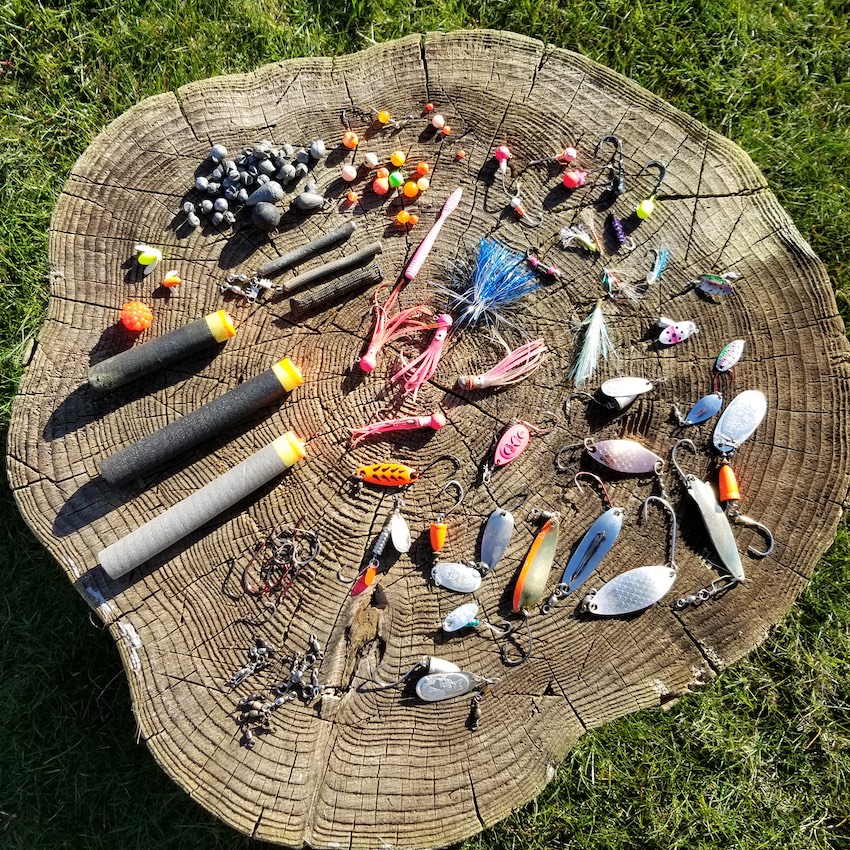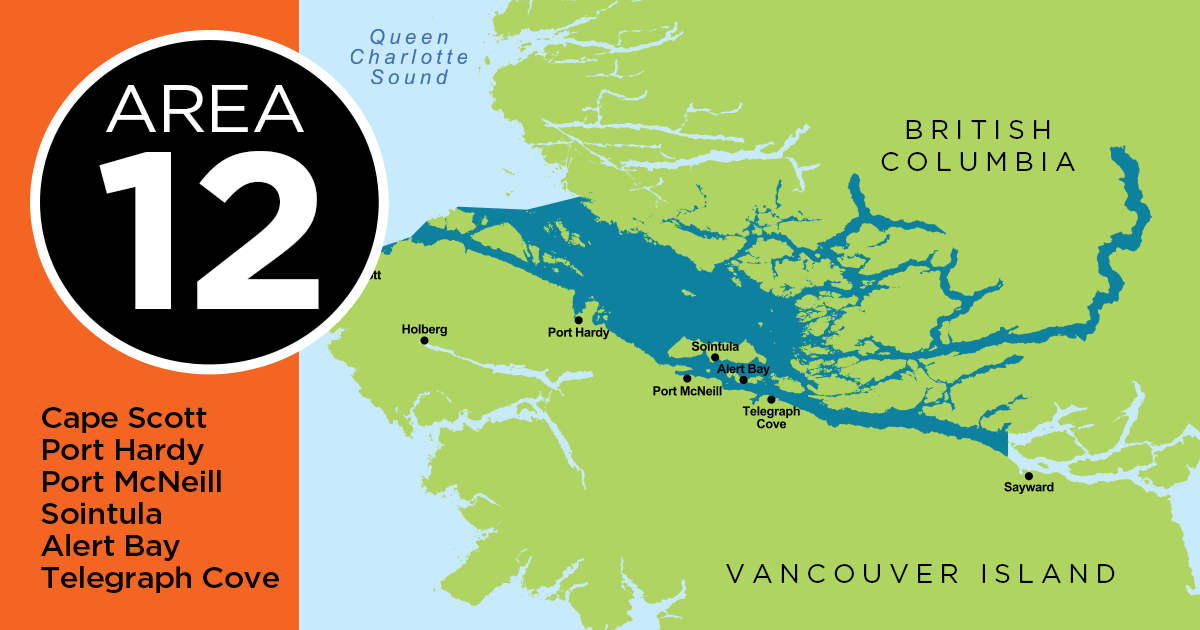
Have you ever wondered what happens to all the lost tackle in a river after the salmon season? The rivers are full of snags—branches, logs, rocks, stumps, and some man-made ones (piers, culverts, garbage etc). And of course, hard-fighting salmon can run off with a lot of tackle, as well. Tackle snags make things worse; they snag even more tackle, turning into tangled webs of line, hooks, lures, wool, and floats. So where does all that lost tackle go? And what can you do about it? I plan on breaking down my experiences on the subject and explaining the hidden world of tackle salvage.
River Safety
Before you think about racing out to your local river, consider the hazards. I am a strong swimmer, experienced free diver/snorkeler, and a certified advanced scuba diver. Know your swimming abilities and stay within your limits. Swimming in flowing water is usually more dangerous than still water. Adding more complexity are obstacles like rocks, boulders, fallen trees, and submerged stumps. Before any river swimming or snorkeling, familiarize yourself with your target location, let someone else know your whereabouts (better yet, have some company), check the weather (rain and water/air temperatures), and check the flows (many rivers have real time hydrometer data from the Canada Water Office). Remember this is supposed to be fun, NOT dangerous. Consider that some rivers are just too large to safely snorkel for tackle, and as tempting as it might be, do not get in over your head.
Time of Year for River Cleanup
There are two times in a year when gear salvage can be done safely. Both times coincide around low water flows/levels in the river. The first is late winter/early spring, and second is summer/early fall. Let’s discuss the differences: Late winter/early spring is an excellent time, as a significant amount of runoff is locked in snow & ice in the mountains. You need to go when there has been little to no spring rain (find a dry spell with cold nights and cool sunny days) and temperatures are not warm enough to induce major snow melt. One big negative is the water is COLD. I have snorkeled in 6°C water for gear, and most people will need at minimum a wetsuit, booties, and hoodie to swim in water that cold for any period of time (Fact: Body heat loss in water is 25-30x faster than in air). Positives at this time of year are that there are very few anglers on the rivers and the tackle lost in the previous summer/fall salmon season is in better condition (less time in the river means less degradation).
Summer/early fall is also an excellent time, as rivers are flowing at or close to yearly lows and the water temperatures are warm! Negatives are that most rivers (with salmon runs) will be busy with anglers, so swimming for tackle will be tricky and unpractical at times. Another negative is that gear is being lost daily so it keeps building up over the season. Some gear will be new, but much will be from last year and slowly corroding.
River Snorkeling Gear
I have snorkeled and scuba dived for years all over the world. In doing so, I have amassed a selection of snorkel, scuba, and free diving gear. For spring snorkeling, I wear a 5mm wetsuit with gloves, hoodie, boots, and weight belt. (I will also add a surf rash guard shirt and swim shorts under the wetsuit.) The weight belt is for buoyancy control, as neoprene is full of air pockets and increases your positive buoyancy, making diving down nearly impossible. The weights bring you back to neutral buoyancy so you can dive comfortably for tackle on the river bottom.

Shaun Hellmich Snorkeling for Tackle
For late summer/early fall I will wear a rash guard surf shirt, swim shorts, gloves, and boots (or water shoes).
An underwater light and knife are useful but not necessary. The knife is handy if you need to pry out some tackle or cut some lines. The light is great for dark days to illuminate tackle. I have snorkel flippers, but my rule of thumb is if I need to use snorkel fins to swim and retrieve tackle, the current is too strong and flow too great to make it safe or practical. I look for water conditions with flow rates where I can swim with water shoes/booties only.

River Snorkeling Gear
Where To Look for Lost Tackle
Spend some time honing in where the bad snags are and where the large percentage of anglers fish. The few rivers where I snorkel for gear are also rivers I salmon fish. I know the snag traps and where the majority of anglers fish, so I target those runs/holes with good success. Usually the worst snags are the ones hidden from above. They can turn into a Christmas tree full of tackle.

Fishing Tackle—Spinner Found in River
Underwater Treasures
I think most people would be very surprised at the amount lost tackle hidden under the water. How much gear can one get? I was able to find 4 kg of spoons, spinners, jigs, buzzbombs, hooks, swivels, weights, and floats in two rivers over two afternoons snorkeling several river runs/holes! Go when it’s sunny, because the sun will illuminate tackle, making it easier to spot, and of course the warmth of the sun after swimming is always welcome (especially in late winter/early spring).

Tackle Salvage

Tackle Salvage
Aquatic Life
I love scuba diving and snorkeling. Life underwater is such a contrast to ours, and it really is another world. Pacific Northwest rivers don’t have the richness of aquatic life of the ocean, but they will still pleasantly surprise. I have seen crayfish, freshwater mussels, otters, beavers, varieties of underwater insects, salmon fry, smolts, adult salmon, and various types of trout. Snorkeling with hundreds or thousands of salmon fry or dozens or hundreds of adult salmon is pretty awesome.

Freshwater muscles

Salmon Fry

Nymphs

Freshwater Crayfish
Tackle Restoration
What happens when you get home with your salvaged tackle? What you don’t do is put it in the tackle box and think you’re done. Lots of the tackle I retrieve requires a lot more work before its ready for use again. “Free” usually comes with a hitch, and salvaged gear is no different. Below is my step-by-step process to cleaning up and prepping the gear for reuse.
- Untangle the gear. You will need a good pair of scissors, pliers, and some trays. Cut away all waste line, separate spinners, spoons, hooks, floats, weights, jigs, buzzbombs, etc. Assess the quality of each item; some will be garbage, most will be usable but need cleaning, and some will be like new.
- Grab a bucket and fill it with warm/ hot soapy water. Put the separated tackle in the bucket and let it soak for a short while.
- Then using an old toothbrush, scrub pad, some 220/325 grit sandpaper (for real dirty or tarnished lures), and some metal cleaner, clean each and every spoon and spinner. For jigs or buzzbombs, I just use a tooth brush and scrub pad.
- Sharpen hooks using a Dremel tool and/or file. Some hooks on recovered lures will be too corroded. Those spinners/spoons will need new hooks and maybe new split rings. Some lures might not be worth saving, but perhaps some parts are (swivels or split rings or blades, etc).
- The last—and very important— step is to thoroughly dry out the cleaned/restored tackle before storing it or adding it to your existing tackle boxes (if wet, you will create conditions for rust to develop and spread to other tackle).

Tackle Salvage Complete Restoration—Spoons & Spinners

Tackle Salvage Complete Restoration—Jigs
Bonus Salvage: Trees and Brush
Some rivers have a lot of overhanging trees and bush. This makes for a lot of casting snags. I have taken a 30′ to 40′ rope, tied on an 18″ to 24″ piece of 1″ dimensional wood, and used it like a grapple. Hook some branches and pull them back within reach, or shake them to release hanging snagged tackle. Low water is again the key here; lots of tackle in trees or bush will be abandoned because at the time, the water level was too high to retrieve from shore.
Reminders
I am constantly surprised by how many barbed hooks I retrieve. Worse yet, I always find treble hooks with barbs. Remember to pinch your barbs, and using treble hooks in rivers and lakes is illegal.

Treble Hooks Found in the River
Final Thoughts
Salvaging tackle is awesome fun, great exercise, and an adventure in finding forgotten underwater treasure! There is also a significant financial benefit of retrieving and reusing all that lost tackle. In addition, you are cleaning up the river bottom by removing fishing waste, keeping the rivers clean and healthy for everyone.

A Day of Tackle Salvage
This article appeared in Island Fisherman magazine. Never miss another issue—subscribe today!
Visit the Store
$34.99
$34.99
Featured Catch

Joel Unickow halibut (Photo: Rob Frawley Lucky Strike Sportfishing Tofino)








